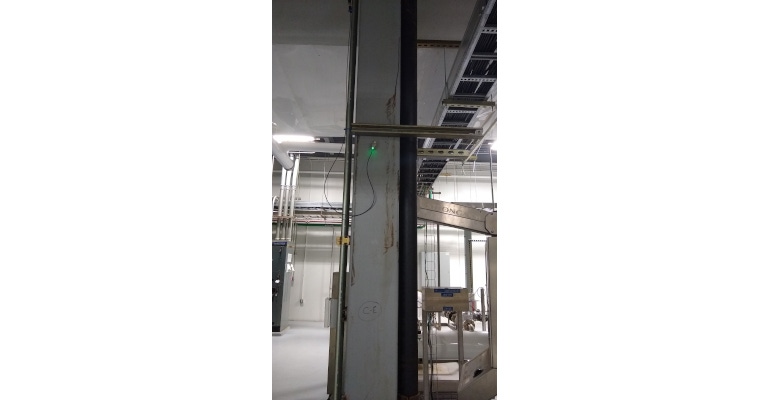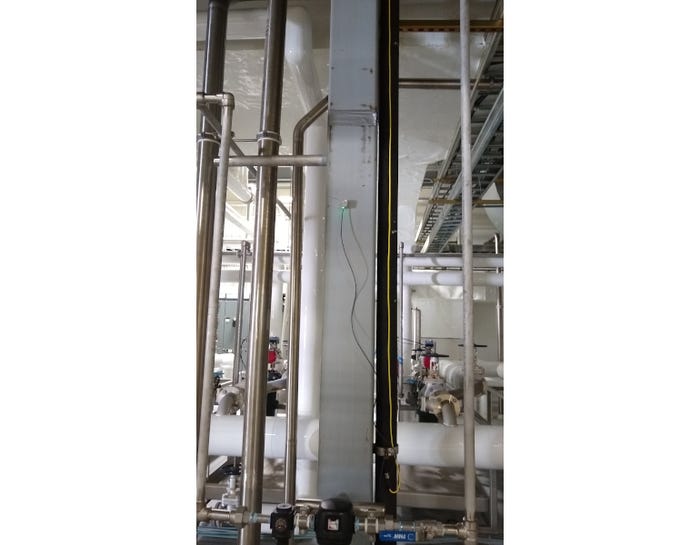Condition Monitoring: What Are We Measuring?
Instead of putting sensors on everything, here’s how to know what conditions to monitor.

The concepts of “preventive maintenance” and “condition monitoring” are not always characterized in a way that is entirely accurate. They sometimes seem to be treated as a “one-size-fits-all” service that many operators and owners believe or know they need. However, these concepts can mean very different things depending on the application.
In essence, one needs to know what they are trying to prevent and what the conditions are leading up to the failure or anomaly before the problems can be prevented. An immediate response to this is often all encompassing, where the personnel responsible for running a process may believe they want to measure everything and monitor trends. However, measuring everything and everywhere can become prohibitively expensive. In a world where costs are of no consequence, this would surely be the most comprehensive way to proceed. But it is just not always realistic. The price of all the sensors, the gateway, and the integration and display of all that information simply becomes too overwhelming and costly. The return on investment (ROI) coming from what problems can be captured is too much of an unknown to justify the shotgun approach of putting sensors on everything everywhere.
Alternatively, zeroing in on the most likely failure points and applying monitoring techniques to those points can be a more-efficient procedure.
What Failures Should You Try to Prevent?
In automation and control, often end users are looking to get in front of potential failures so plans can be produced ahead of time. Thus, they will often ask for a list of every possible failure to anticipate. This kind of request can be typical but is also very difficult to address comprehensively. A list of troubleshooting information from the user manual can certainly be helpful, but it won’t ever be “every possible failure” that may occur. There are some events that just can’t be foreseen…such as someone accidentally spilling a bucket of water into an electrical cabinet! Of course, it is possible that electrical cabinet could have had a leak detection sensor in it, but planning for that kind of mishap would be nearly impossible.
What if you have had a particular problem or know exactly what problem you are likely to see, however? For example, if there has been a past failure that you absolutely don’t want to happen again, it is far more plausible to take an educated guess about what you may need to monitor. Or if other similar companies have persistent challenges, this may lead you in a direction to know what to keep an eye out for. In these situations, the wise application of condition-monitoring sensors can save a substantial amount of money and headaches.
A Case Study in Condition Monitoring
Valin has a customer operating in a dry climate with a control room hosting motor control centers containing about 120 variable frequency drives (VFDs) in its cabinets. As a food process company, they use a large amount of steam. However, there was no reason to think it had to measure humidity in a control room in a facility in the desert. The customer certainly did not think so until they had steam leaks three times over a span of 15 years that filled the control room with moisture, driving the humidity up. Without sensors, the operators did not know what humidity level was reached, but they did know it went high enough to cause many of their VFDs to fail. Datasheets for automation electronics typically specify the humidity can’t exceed 80 percent. In one situation, the customer had to open the control room up and let the steam clear out before they could even enter the room to assess the damage.
After each of these costly events, the customer had to replace 8 to 10 VFDs, costing them roughly $10,000, not including their labor and downtime. Each time they were down for several hours while they pulled together spares or stole units from less-necessary systems to get back up and running. When the room filled with steam, they were down roughly 8-10 hours. If a company’s downtime costs $10,000 per hour, the one event cost them more than $100,000.
Last year the company began to think about how to catch these problems. At the same time, the Valin team introduced them to condition-monitoring sensors for vibration and temperature, which are the first data points that typically come to mind when operators think about preventive maintenance. However, these sensors also have a humidity option, which is what really caught their attention.
Once the customer decided to implement these humidity sensors in their control room, their cost was only about $1100 for a couple of Balluff sensors to cover a 50 x 300 ft room. They already had IO-Link masters in their system to plug these sensors into, and the programming of their existing controls to throw an alarm when the humidity value went too high was minimal. They set the alarm value at 60 percent humidity to begin. The most challenging part of the installation was running the cables from the sensors to the controls. Mounting the sensors was simple with their magnets easily sticking to the overhead crossbeams. They didn’t even have to take the system down as they could update the programming while the system was up and running. The PLCs’ HMIs will show alarms while the PLCs will also send out text messages to alert the supervisors. For the cost and ease of implementation, the operation is already driving down costs compared to just one of the steam-leak events. This is just counting the hardware, not even the down time.

The customer is also able to monitor the temperature in the control room with the same sensors. It has two air conditioning units for the control room because of the climate. VFDs tend to fault out around 140 degrees F. Thus, the customer set their alarm point at about 110 degrees F with the expectation that it will catch the failure of either one of their AC units.
Preparing for the Future
When another leak event does happen again, the company can rest assured protections are in place. The operators know what the failure mode has been, exactly what information they need, and the steps they need to take to keep it from being a more expensive failure.
About the Author(s)
You May Also Like





